Delicate, intricately crafted lace pictures – with a modern take and framed with carefully selected small knotty branches – have brought Hungarian artist Agnes Herczeg international recognition.
Her fine, detail-oriented artworks range from a petite 5cm up to 18 cm for the taller pieces. They often depict peaceful scenes of domestic chores and bucolic landscapes and portray women as introspective and resting, showing their connection with nature.
It was at the Hungarian University of Fine Arts, where she studied textile restoration, that Agnes first discovered her love of the “almost forgotten” techniques of fine embroidery and, in particular, lace-making. Through her own diligent practice, learning from her array of specialist needlework books at home, Agnes developed her exquisite and meticulous skills.
The ethereal pieces often portray traditional women’s work in the garden or countryside. Threads of blue, green, orange and brown entwine to form fruit trees and figures. The pieces convey a striking visual juxtaposition between the looseness of the lace and the solidity of the wood and her determination to push the boundaries shows in each and every piece she makes
Just reading Agnes’ story and pondering her fine artworks imbues a sense of peace and stillness that will reach out from the page to every reader. Through her words, we come to understand why this artist has not pursued fame through exhibitions, awards and prizes; for her, continuing professional development is something innate, not a tick-box exercise to meet the needs of professional associations.
Agnes Herczeg is an artist who has found peace, happiness and contentment through her quiet, focused sense of achievement.
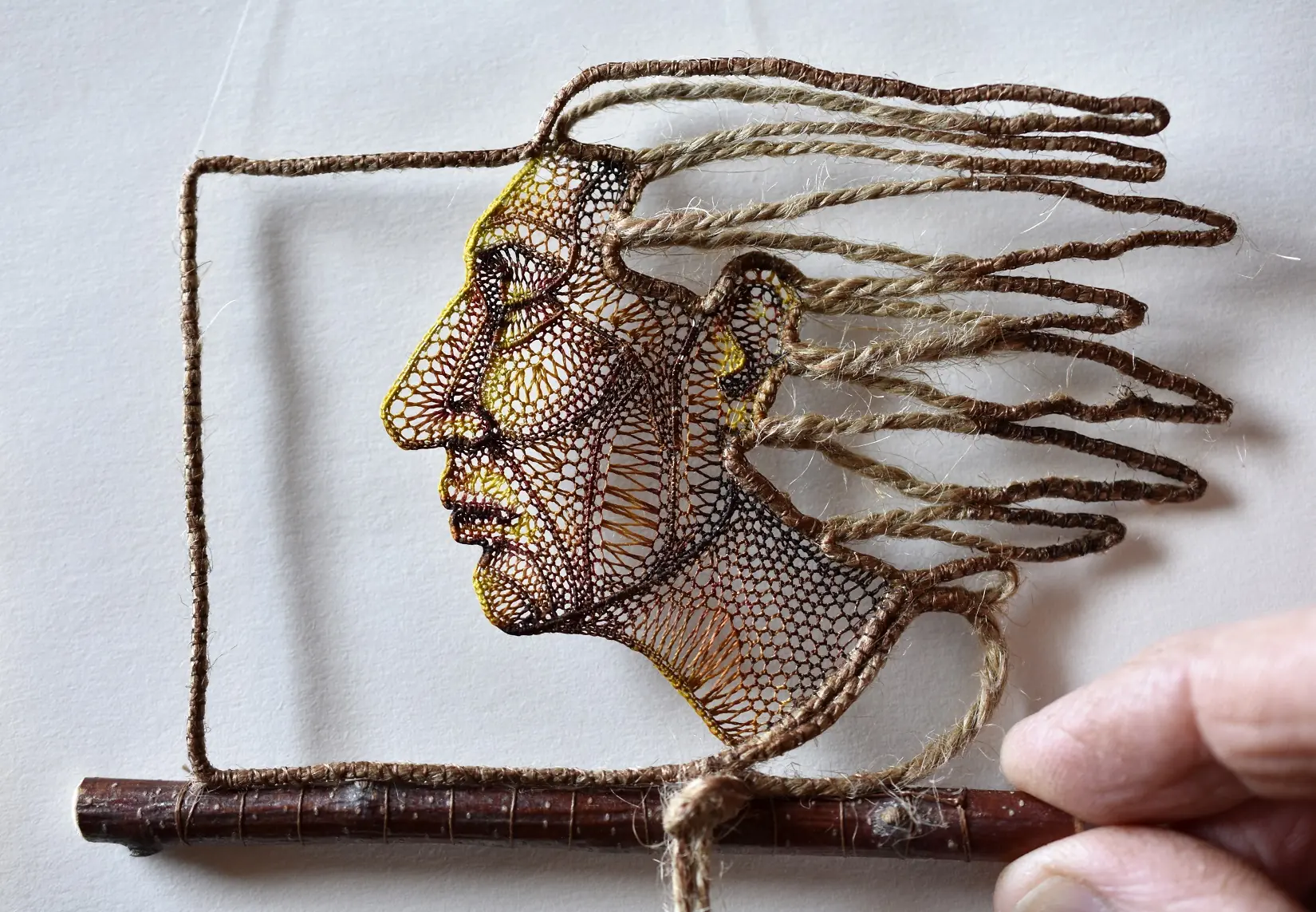
A devotion to lace
TextileArtist.org: What initially attracted you to textiles as a medium? How was your imagination captured?
Agnes Herczeg: I graduated from the University of Fine Arts in Budapest as a textile restorer in 1997. During my restoration practice, I was able to examine museum pieces that represented a high standard of art. These were amazing works, so delicate and detailed. I was touched by the enormous technical knowledge that the early masters worked with; every part of the piece – even the non-visible surfaces too – was made perfectly. I really wanted to learn these artistic textile techniques.
I first learned the basic techniques during my studies, when I had the opportunity to try them myself – we had to make sampler fabrics to study the stitches as part of our course.
I have tried many different embroidery techniques over the years, and continued to study – simply from books – many in-depth handicraft techniques following my graduation.
Closest to my heart are lace techniques; I have devoted most of my time to studying needle lace and pillow lace. Initially, I worked from needlework books, learning everything by myself, just practising and improving all the time. It was a very enjoyable period of my life. Needle lace was probably the technique that I found the greatest challenge.
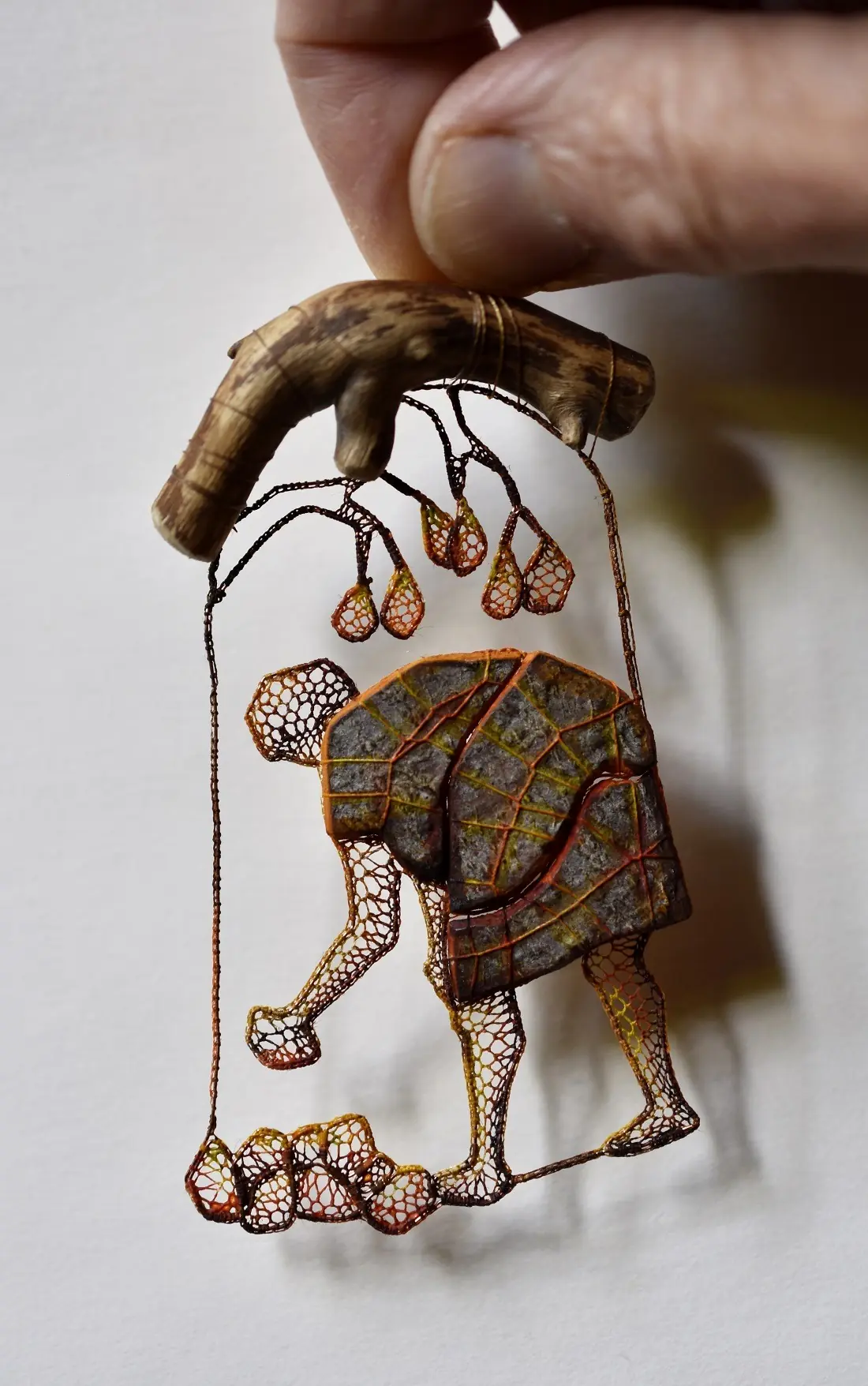
What or who were your early influences and how has your life/upbringing influenced your work?
Knitting and crocheting were a huge trend in my childhood, and practically every woman did some kind of needlework. My mother would often knit and crochet for us.
As a kid, I used to adore the museum of folk arts and crafts that was in my hometown. I would visit their exhibitions frequently and I fell in love with the wonderful textiles that I saw there.
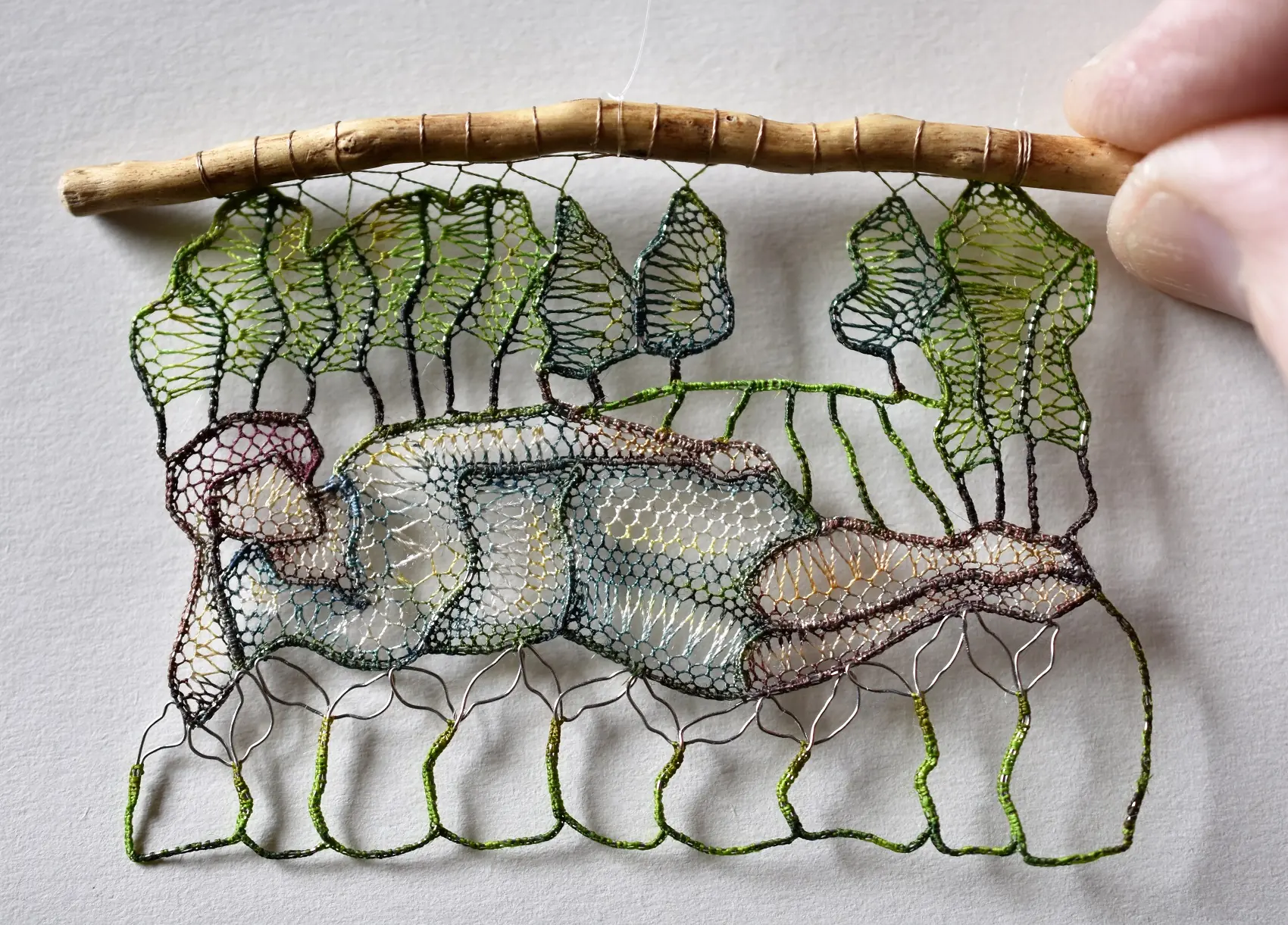
What was your route to becoming an artist?
In the years after my graduation, I made sampler fabrics with various techniques, and I copied beautiful old pattern elements from my needlework books containing many rich and wonderfully elaborate patterns. I tried to learn as many techniques as possible, such as various embroidery techniques, needle lace, pillow lace, whitework embroidery, bobbin lace, filet lace, crocheted lace and macrame.
Then, in addition to the copied works, I started to make my own designs. Out of the many techniques I tried, I found lace the most interesting. I started working with lace works in 2013. This was when I created my facebook page and started my own website. My audience has grown steadily and organically since then, and it has absolutely been worth the wait.
I haven’t worked as a restorer now for twenty years, for family reasons; I stayed at home with my family after my second baby was born. Alongside the hustle and bustle of parenting, making needleworks was not only relaxing but also useful; I could spend the time further developing my knowledge.
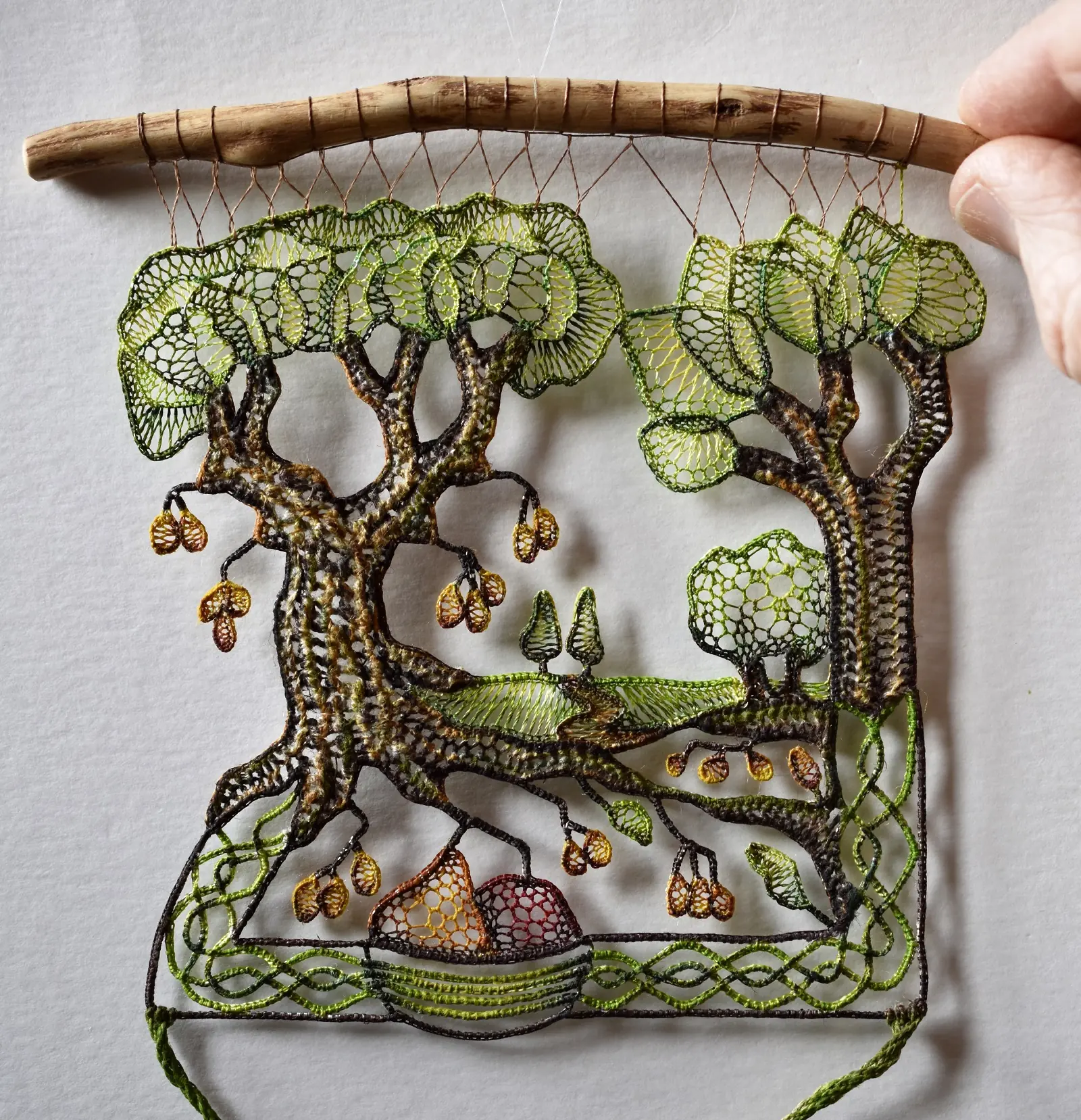
Planning the stitches
Tell us about your process from conception to creation
Planning is an extremely important part of my work, which frequently feels like a very complex puzzle. It’s not just about designing the composition or colours, but also the planning of the order and density of the stitches and the ideal order of workflows.
Once I have finished the concept, I sketch the outlines onto a piece of thick paper, and then I fix the wire contour to this background. I have improved the traditional technique a little bit, for instance, I use thin wire as the contour – this helps to keep the lace tight. After this, I can start filling the areas between contours with the loop stitches.
Working on a piece requires quite a bit improvisation; I need to find the best way of varying the density and the size of the loop stitches. Every single small stitch is significant; if something doesn’t fit correctly, it has a very disturbing impact on the final picture.
Special attention has to be given to the seaming of the thread ends – it should not be visible at all.
When I finish the lace, I have to remove the paper background, and after I have thoroughly cleaned the lacework of each last remaining tiny fibre, I can start the painting process. For colouring, I use water-based highly pigmented paint, slowly applying it layer by layer with a very thin brush. This is a very exciting part of my work because it becomes a real picture with this step.
The last step is always to fix the lace to the branch with stitches – or to any other material that makes up the frame. If I use bark pieces in the composition, I have to prepare well, cutting out the shape, polishing and painting – and fixing it with stitches to the right place. This is a difficult task because I have to do this step on the finished lace after I have removed the firm background.
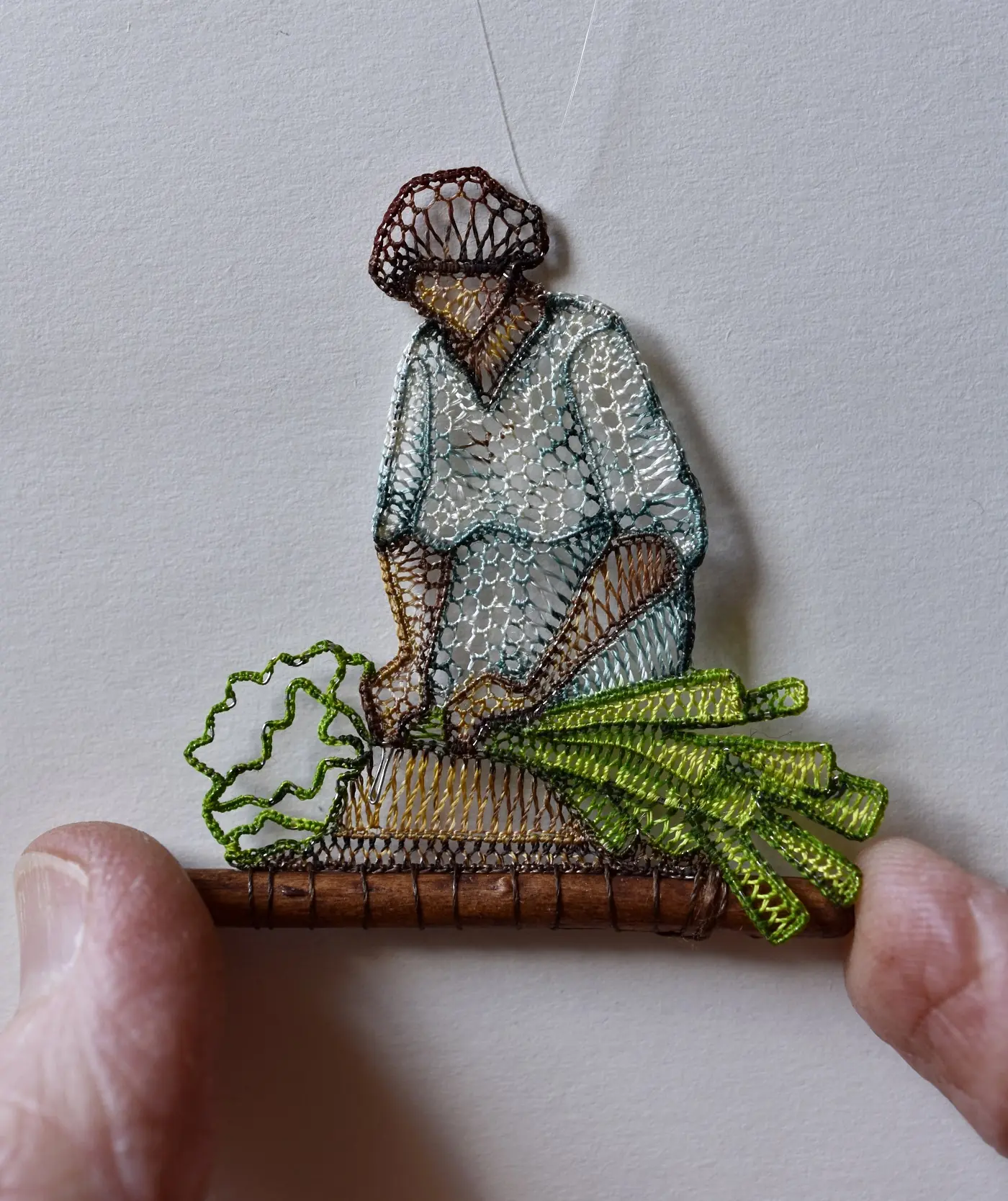
Tell us a bit about your chosen techniques and how you use them
Needle lace is made with needle and thread in various materials and thicknesses. Making needle lace may seem complicated at first sight, but it is actually only a series of tiny loop stitches. However, because of the intricate detail, it demands great patience and attention.
I mainly use natural threads of plant origin like linen, hemp, cotton, jute, raffia and pure silk thread. I really like to combine the lace with different materials like bark and little branches, and sometimes coconut shells, fruit seeds, little ceramic sculptures and so on.
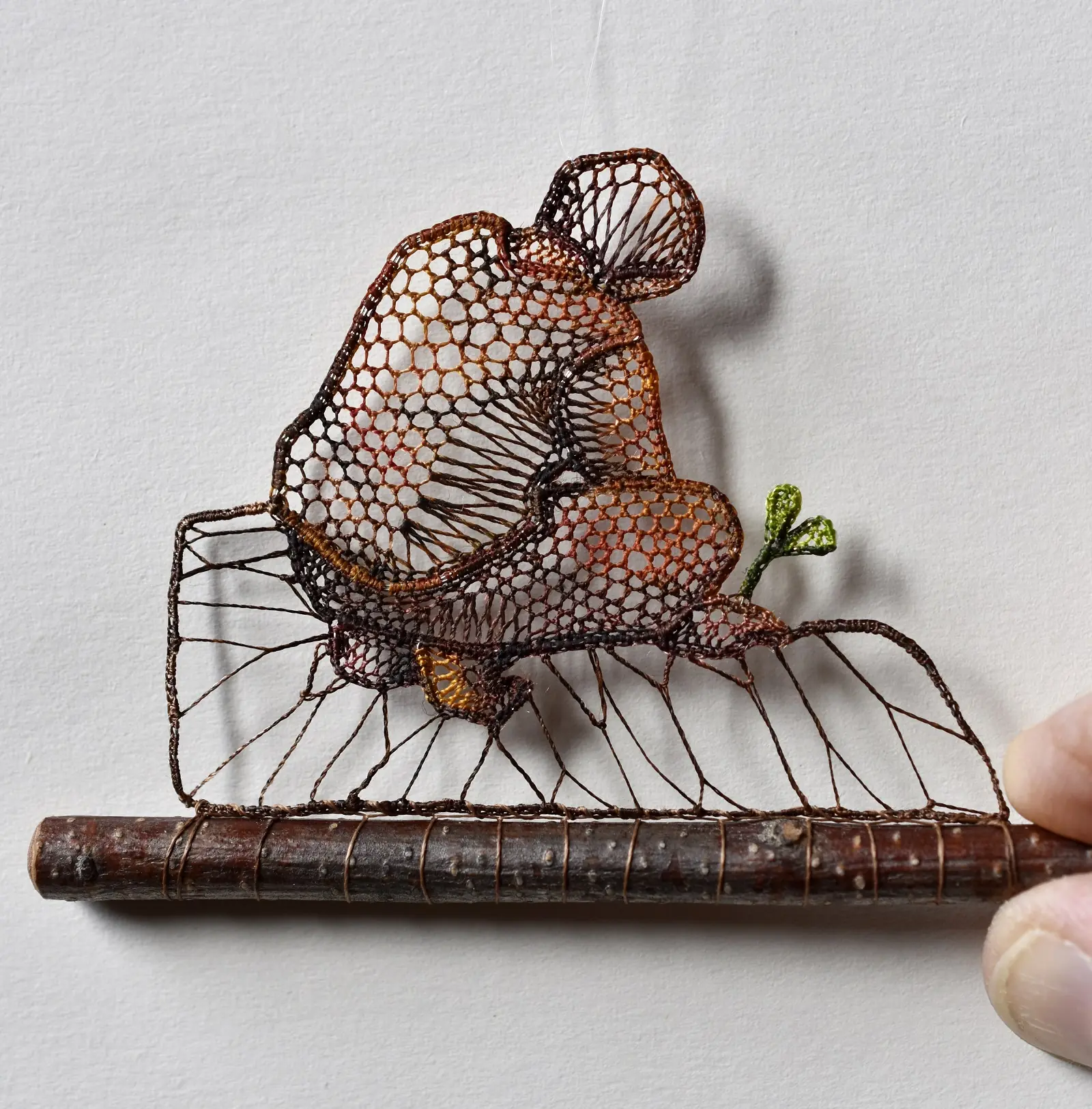
What currently inspires you?
I love walking in nature. I live near the river Danube so I spend a lot of time on the river bank, taking time to collect attractive branches.
I have a huge collection of little branches. Each has an interesting shape – they are all just waiting for me to choose one to include in a new composition.
Nature has a great influence on me, and I would say that most of my pieces are inspired by this beautiful environment.
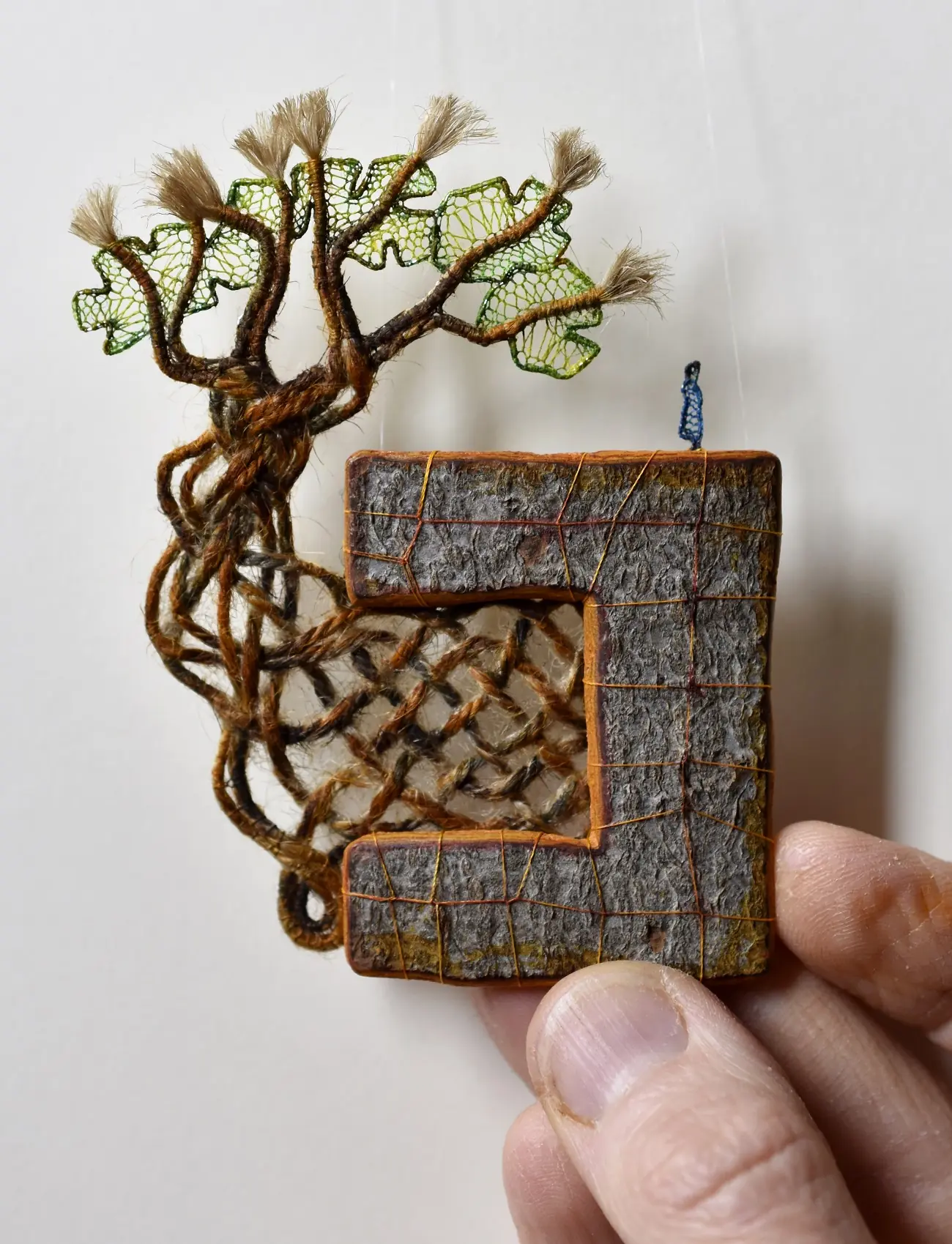
Are there any artists who have inspired your work and who are these? What is it that you like about their work?
I have followed and admired the work of Eszter Bornemisza – a member of the 62 Group of textile artists. She makes artworks from recycled paper, textiles and other found soft materials. Her works are really impressive, and very poetic.
I also admire artists from the prehistoric age, who used nature’s resources, painting caves with mineral-paint, shaping sculptures out of clay – they knew exactly how to use materials from nature.
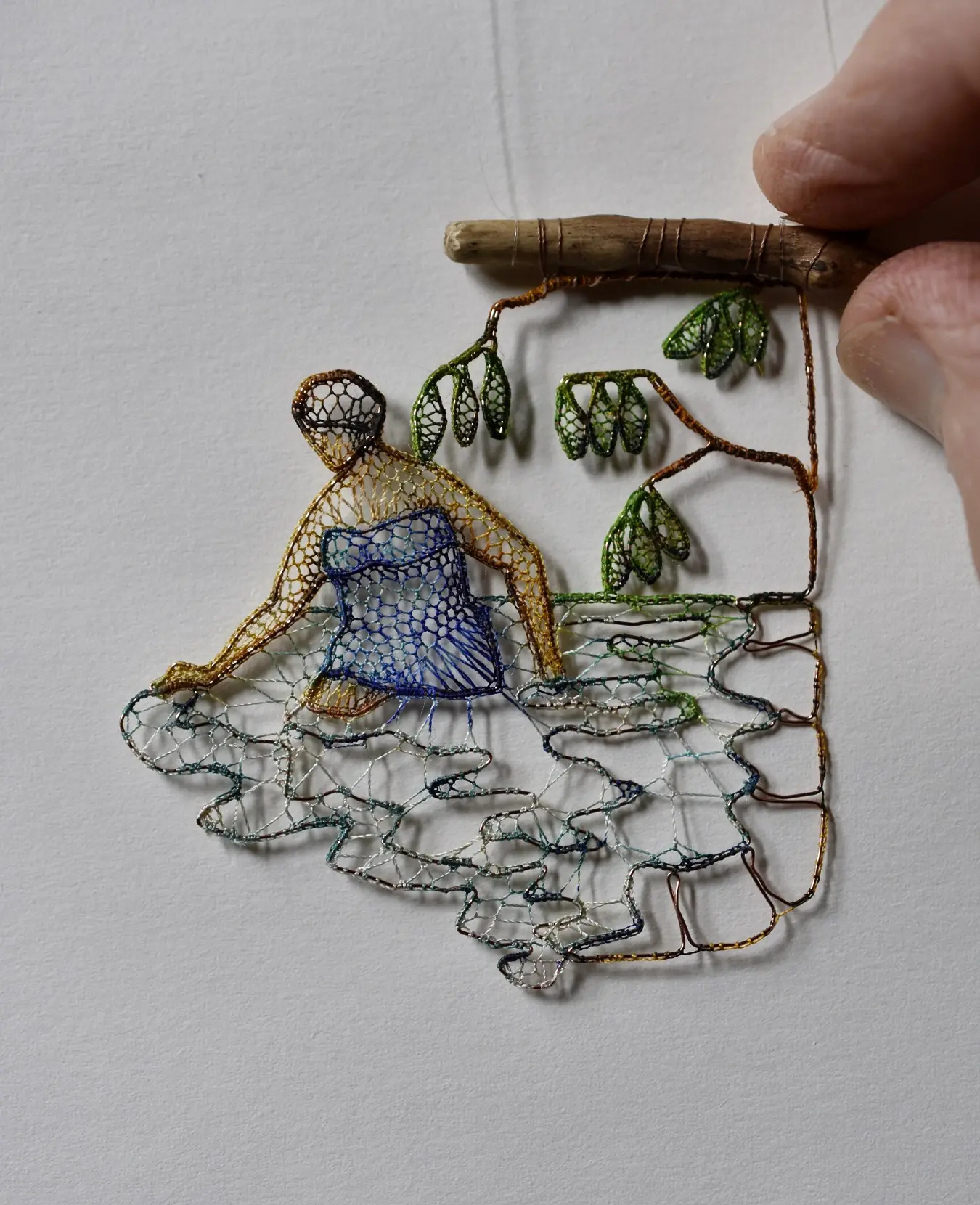
New ideas and materials
Tell us about a piece of your work that holds particularly fond memories and why?
I cannot choose just one piece of my work – I feel my answer wouldn’t be honest enough. I don’t have a particular favourite piece; they are simply my works with better or less good results.
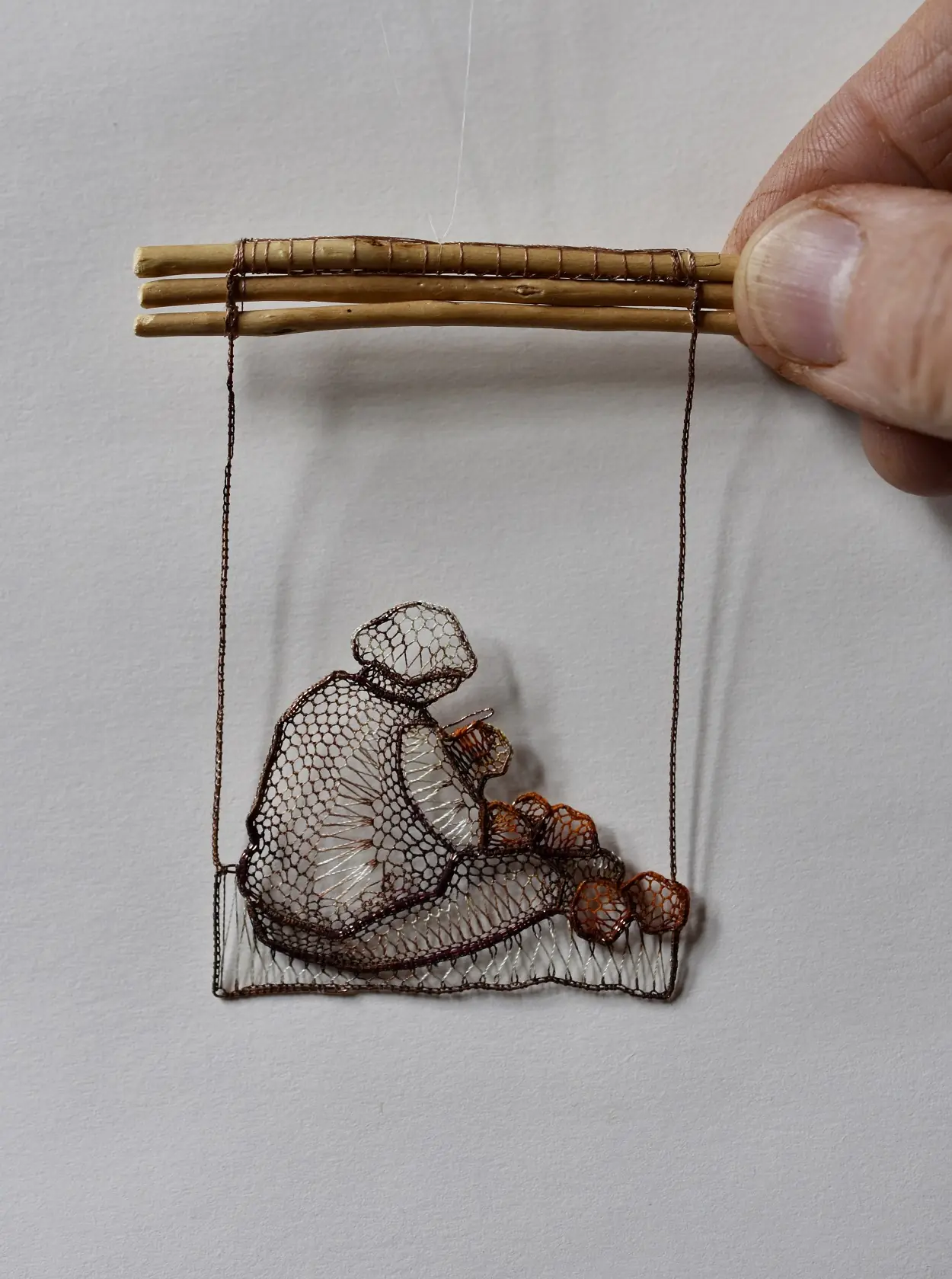
How has your work developed since you began and how do you see it evolving in the future?
Continuous self-education is very important to me and I’m constantly trying to come up with new ideas and new and exciting materials. Recently, I figured out how to combine the lace with little bark pieces. It was a quite difficult challenge. I think I may be able to use other materials too … I just need to stumble upon them…
If I am looking to collect purposefully, I go down to the river bank. Because I live near the River Danube, it is quite easy for me – and the Danube is so beautiful. But I always keep my eyes open; interesting elements can unexpectedly be found everywhere – in my garden or in the middle of a fruit.
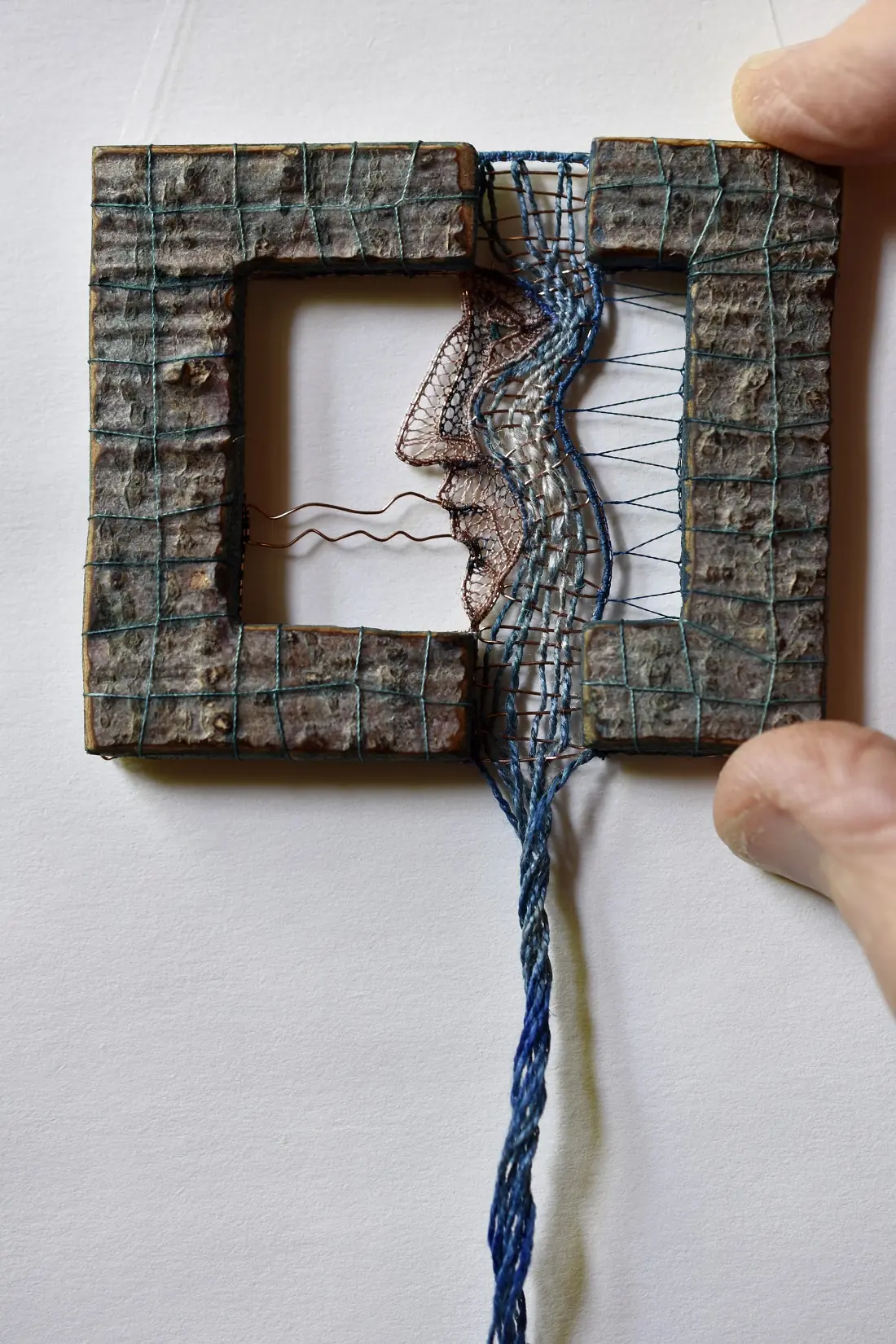
What advice would you give to an aspiring textile artist?
Many people ask where and how they can learn this technique. I believe that the first steps can be learned from simple descriptions – in tutorials, books – and there are many available. After that, the only way to master the technique is to practice it diligently with the intention that the next one should supersede the last; I aim to make each one better and better.
The most important thing is that you really desire to master the skill and then perform it with all your heart.
Really.
It may sound like empty words, but I believe that enthusiasm is the key.
For more information visit www.agnesherczeg.com
Has this article inspired you to try any new techniques in your own textile art? If so, we’d love to know – please share with us in the comments below.
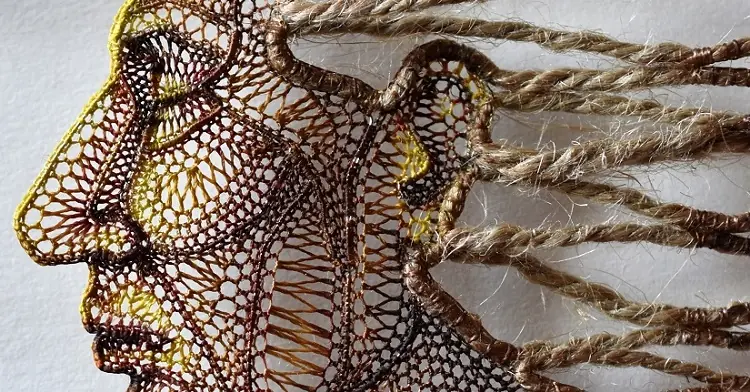
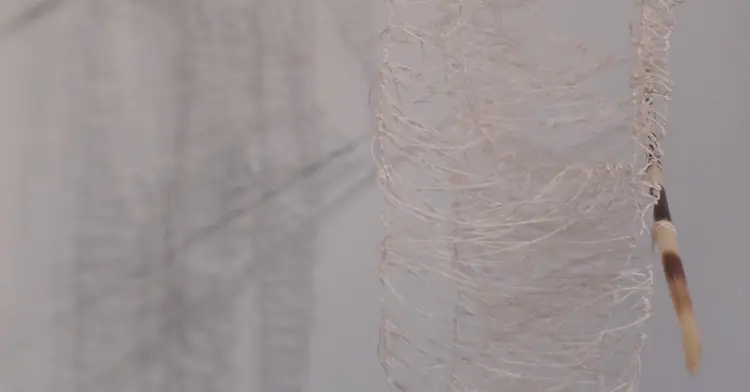
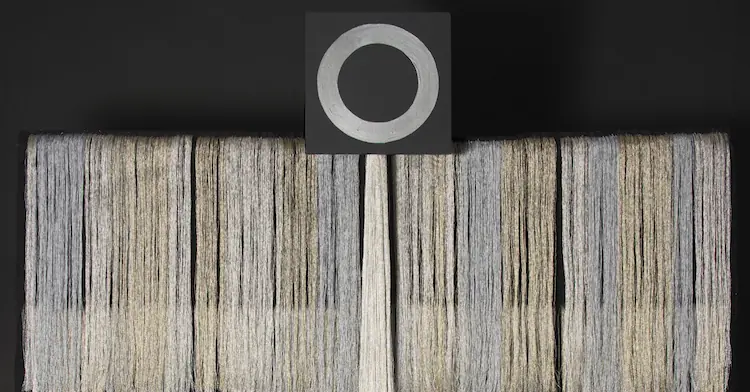
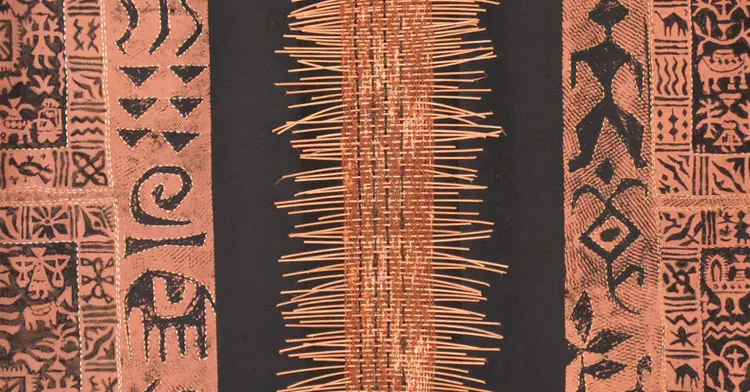
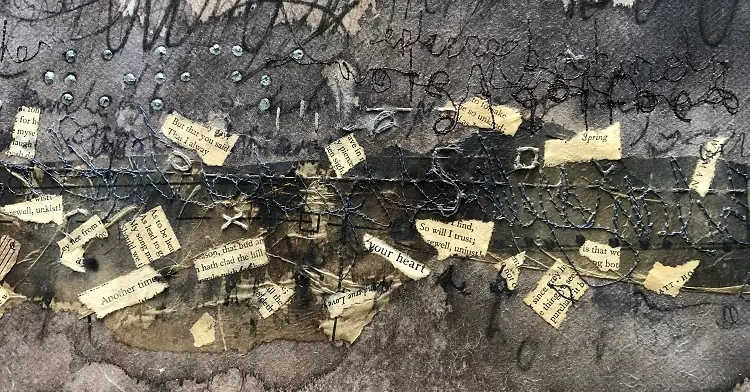
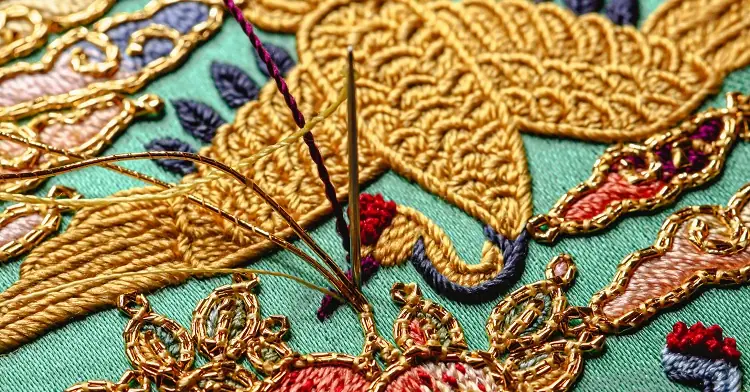
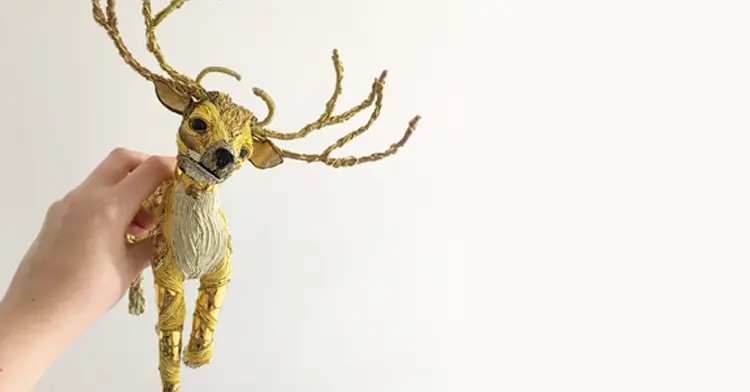
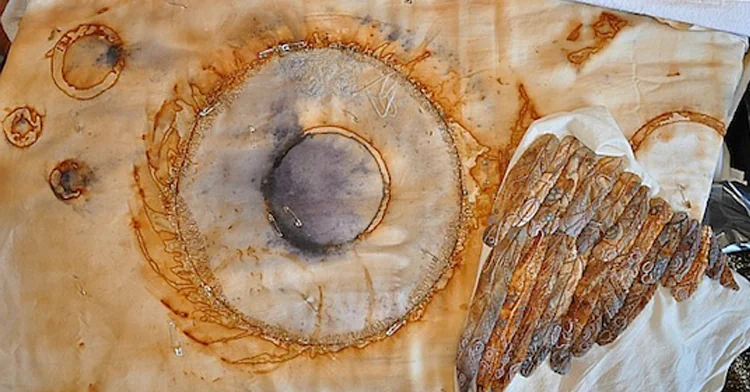
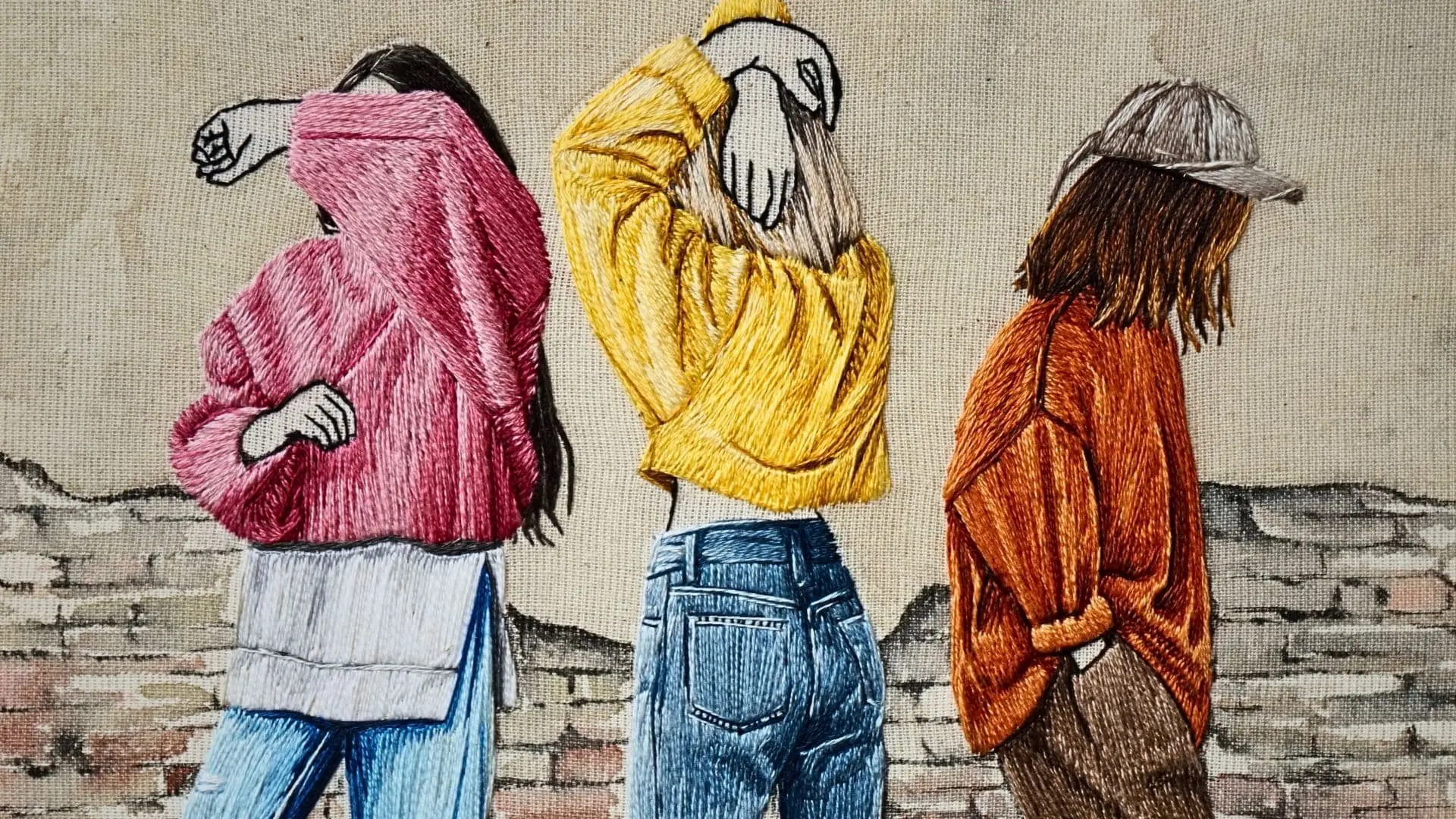
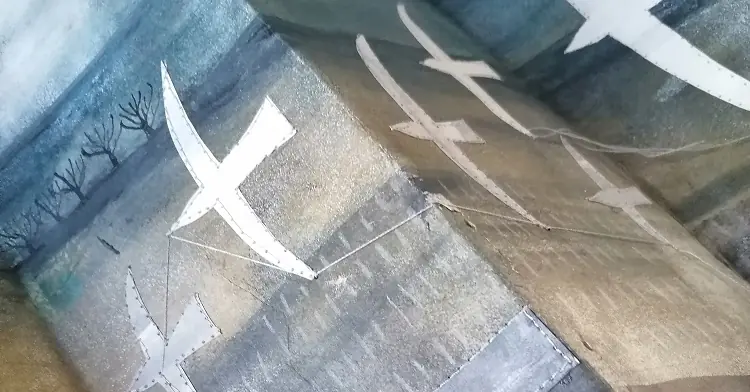
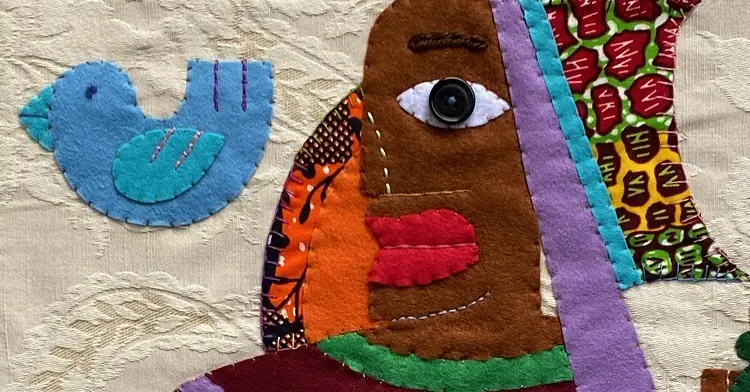
12 comments
Gill Tyson
This article popped up on Google as I was searching on contemporary needle lace and I wanted to say how enjoyable this article is – five years on and still being appreciated . The current workshop with Bridget Steel-Jessop (2024) is a great introduction to this traditional embroidery technique and her explanations are very clear. The workshop and this article with Agnes Herczeg’s beautiful work are inspiring!
Susan Pesti-Strobel
Dear Joe and Sam,
Thank you so much for featuring Agnes Herczeg, whose work I have been following with admiration and enthusiasm. I am stunned by the details on this scale and the perfection of portrayal in her female characters. Also, what a wonderful new life she gives needle lace! I am indeed inspired by every facet of her art and use of materials, especially the reimagined and recreated relationship between silk and wire – such a classic! I can’t wait to see more of her works.
Barbara Shapiro
I just loved this work which is technically exquisite and emotionally very moving. Agnes takes “women’s work” to a whole new level. I have shared the post with the lacemakers in my weaving group in the San Francisco Bay area. Bravo!
Anne Godwin
I have admired the art of Agnes Herczeg for years. I love the way she has incorporated bark, wire and various threads in her latest work. It’s absolutely stunning. I love the needle arts – I crochet, knit, tat, do Hardanger, quilt. Have the equipment for bobbin lace and want to learn.
Thanks for sharing these artists.
Marianne
Kedves Ágnes,
Szívből gratulálok csodálatos miniatúráidhoz!
Én egy budapesti kövület vagyok, szerettem volna magam is egész életemben textillel, fonalakkal, selymekkel satöbbikkel foglalkozni, ezeket élvezni és közben valamit alkotni. Hát ez nekem nem jött össze – rosszkor születtem, ennyi az egész. De a te alkotásaidon látszik, milyen óriási örömöt adnak Neked. Szívből kívánom, hogy még sokáig tervezz ezekhez hasonló gyönyörűségeket!
Kiss Marianne
műfordító
Judy Ries
Agnes’ work is so creative and lovely, looking at it has a calming effect, it may just be the spark I needed to pursue lace making, which has been fascinating me for a long time.
My own grandmother and her sisters did tatting, crochet, crewel, bargello, and embroidery. My Austro-Hungarian grandmother-in-law did lacemaking too, and I cherish the one piece of her work that I have.
Thank you for sharing her with us,
Judy Ries
Mary Aitken
Would love to br a lr to do this kind of work. Have studied any pictures I have seen and they look so beautiful and the detail is amazing in work so small but perfect and delightful.
Cheryl Scherzer
I love it when artists use traditional techniques in unconventional ways! Agnes’ use of mixed media to enhance and present her exquisite pieces magnifies the three-dimensional quality in such a way that you would swear they are drawing breath. Thank you for bringing this astounding artist to my attention!
Wendy sanderson
I have seen this stunning work by this artist before , and love it. I enjoy doing needle lace , but mine is totally abstract , and nowhere near as skilled as this , but one can aspire to ! But probably maybe not. Thank you for showcasing this beautiful and skilful work by this original artist.
Dimitra Nazou
Congratulations agnesherczeg
i live in MYKONOS island IN Greece.We have rich collection on tulle lace. Nice to communicate.
With my regards
DIMITRA NAZOU
Pam Buck
This artist has long been an inspiration to me so thank you for this article sharing her thoughts. Her work is so totally unique and beautiful, it has been on my list of things to try for some time but I guess I feel a little daunted by her very special skills. However, as she says, nothing ventured, nothing gained so maybe this will be the year!
Sylvia
These pieces are incredible just in the size alone. Using a very traditional skill to make these pieces is really interesting. I think one thing that was impressive—and important—is that she worked hard to master the basic skills first before venturing out. I would guess she also spends a lot of time drawing. Thank you for this article